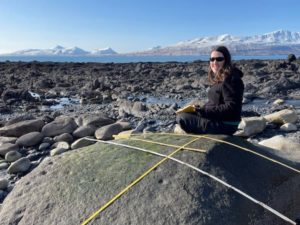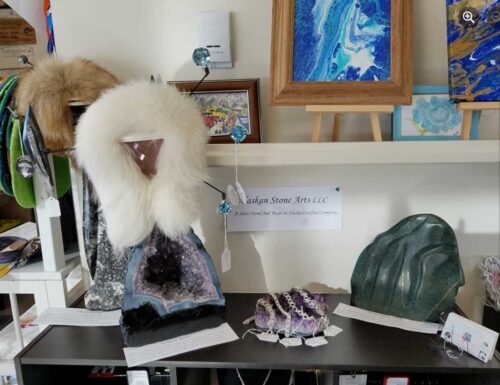
With a $42,000 grant from the US Bureau of Indian Affairs, the Sun’aq Tribe of Kodiak and the Alutiiq Museum are collaborating on a study of ancestral Alutiiq rock art. The project, which started in January, is helping museum archaeologists study areas with known or suspected petroglyphs. Petroglyphs, or rock carvings, are a traditional form of artwork created by Alutiiq ancestors as much as 1000 years ago. They are known from about fifteen areas in the Kodiak Archipelago.
“This project is a targeted effort to document little-known rock art sites,” said Alutiiq Museum Curator of Archaeology Patrick Saltonstall. “While the Cape Alitak petroglyphs are the largest and best known examples of Alutiiq rock art, there are a number of other places in the Kodiak region where people have reported carvings. We’ve been keeping a record of these reports and with grant support we are now be able to visit the sites to do some investigation.”
Fieldwork for the project began last week with a day-long helicopter trip to the south end of Kodiak Island. At Cape Hepburn, Saltonstall and archaeologist Molly Odell located and documented a boulder covered in small circular pits. They discovered a similarly pitted boulder in front of an ancestral village in Spiridon Bay.
“In recent years we’ve realized that there are at least two kinds of petroglyphs. Many people are familiar with the faces and animals carved into the bedrock at Cape Alitak. But there are also places where people pecked holes and cut lines in boulders,” said Saltonstall. “We don’t know what these carvings mean, but there are often many of them.”[content id=”79272″]
Later this spring, the team will investigate locations around Afognak Island. The finds will be summarized in a technical report and shared in a public lecture next fall. Till then, the museum will post examples of the rock art on its social media pages. Saltonstall also encourages anyone who has seen rock carvings to report their observations to the museum.
“Rock are isn’t always easy to recognize. It’s often faint and can be submerged by the tides or covered in lichens or seaweed. We’ve found a number of these pit-style petroglyphs will the help of local people. Pilot Keller Watum reported these latest discoveries.”
The Alutiiq Museum is a non-profit organization dedicated to preserving and sharing the history and culture of the Alutiiq, an Alaska Native tribal people. Representatives of Kodiak Alutiiq organizations govern the museum with funding from charitable contributions, memberships, grants, contracts, and sales.
###







